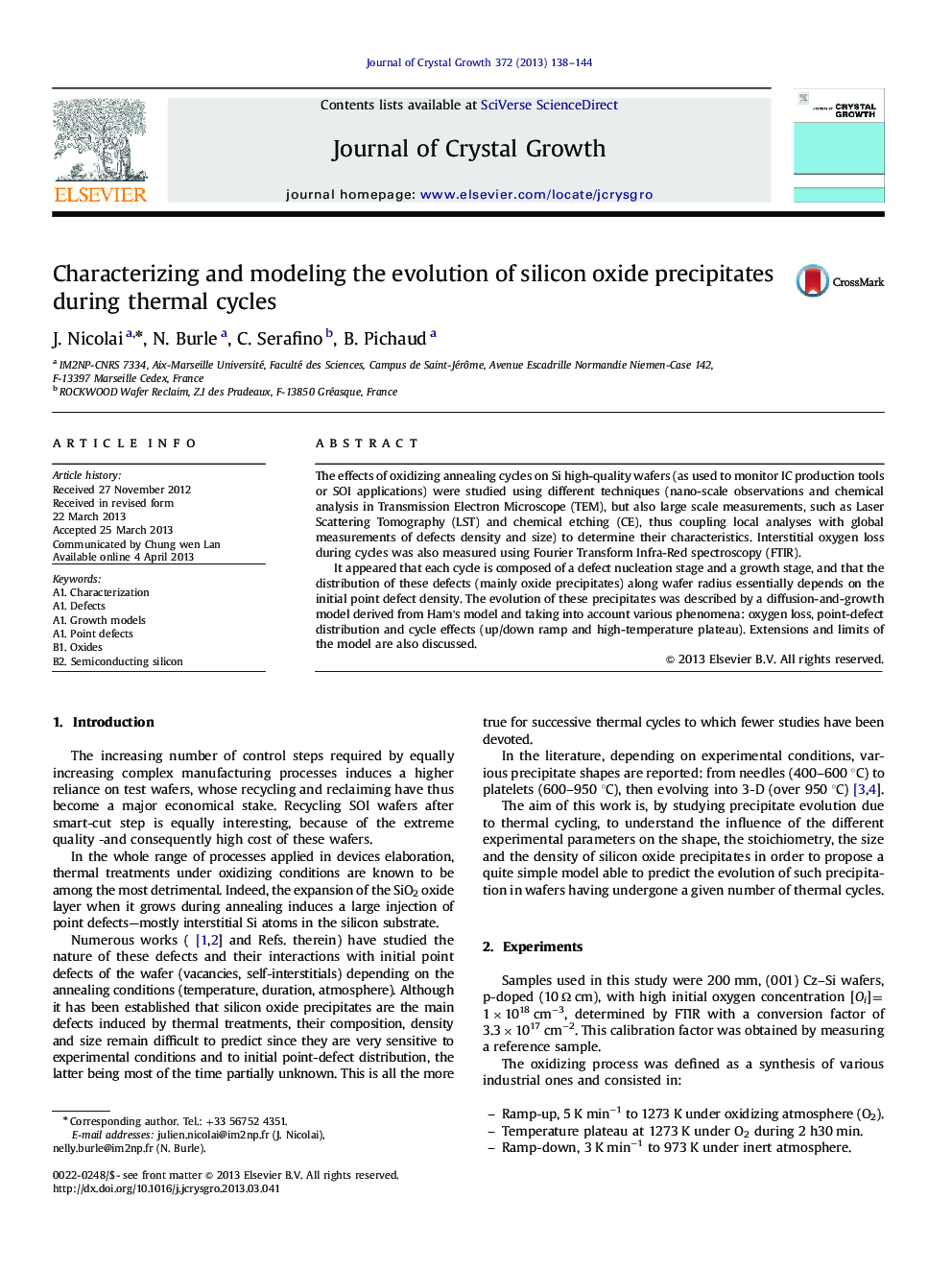| Article ID | Journal | Published Year | Pages | File Type |
|---|---|---|---|---|
| 1790990 | Journal of Crystal Growth | 2013 | 7 Pages |
•Silicon oxide precipitates have a SiOx stoichiometry (with x close to 1).•Each annealing cycle is composed both by a nucleation stage, and a growth stage.•Ham model was modified to consider the decrease of oxygen during cycles.
The effects of oxidizing annealing cycles on Si high-quality wafers (as used to monitor IC production tools or SOI applications) were studied using different techniques (nano-scale observations and chemical analysis in Transmission Electron Microscope (TEM), but also large scale measurements, such as Laser Scattering Tomography (LST) and chemical etching (CE), thus coupling local analyses with global measurements of defects density and size) to determine their characteristics. Interstitial oxygen loss during cycles was also measured using Fourier Transform Infra-Red spectroscopy (FTIR).It appeared that each cycle is composed of a defect nucleation stage and a growth stage, and that the distribution of these defects (mainly oxide precipitates) along wafer radius essentially depends on the initial point defect density. The evolution of these precipitates was described by a diffusion-and-growth model derived from Ham's model and taking into account various phenomena: oxygen loss, point-defect distribution and cycle effects (up/down ramp and high-temperature plateau). Extensions and limits of the model are also discussed.
